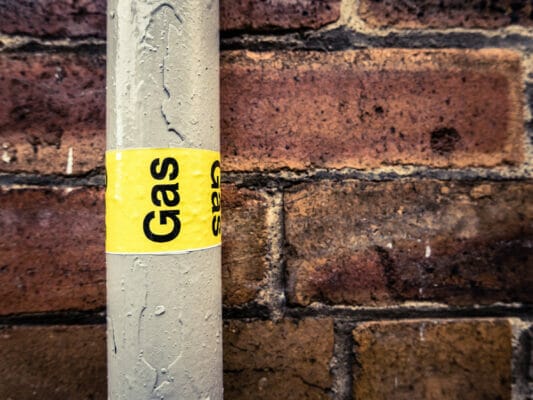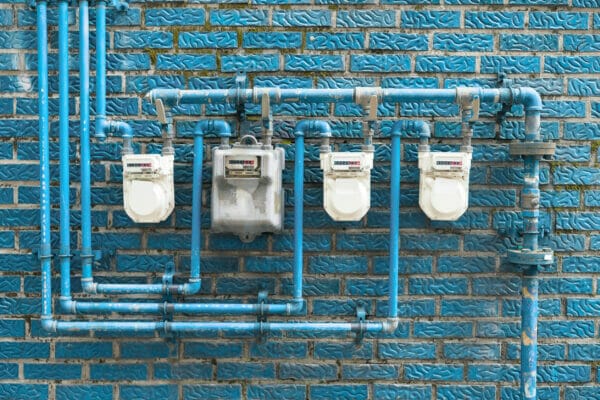Disclaimer: This post may contain affiliate links, meaning we get a small commission if you make a purchase through our links, at no cost to you. For more information, please visit our Disclaimer Page.
Running a gas line can sound daunting and for those unsure whether they can install a gas line. Can you?
You can not run your gas line as it is a risky task. However, if you are a licensed plumber or you have a permit then you can do it yourself. Take note that carrying on the task requires you to be very cautious to prevent accidents.

Also, for those unsure whether they can or want to install a gas line, here are a few frequently asked questions answered in this post.
Table of Contents
Do I Need a Permit to Run a Gas Line?
You need a permit to run a gas line since most installation tasks require it. Therefore if your city wants to do a certain job and you are a licensed plumber, you’ll be able to show it and ask for an inspection.
In case you decide to do the job without a permit and it’s needed then you may be charged twice its fee.
The city may even want to see the line discarded and reinstalled by someone who’s licensed.
Other Things You May Need to Consider
You need to also consider the following as you plan to run a gas line;
Personal Liability and Insurance
Handling gas lines is so risky and this is why the personnel involved pay higher insurance premiums. And before you start running the pipes, you need to know whether your homeowner’s insurance will pay for harm in case something is wrong.
A majority of their insurance policies don’t include the cost of damage arising from a self-initiated gas.
Possibly your liability is vital in any case an explosion or fire occurs. Thus taking earlier precautions is the best, as the consequences can be too much as opposed to if you hired a professional.
The Codes
When you hire an experienced plumber for the installation, the work will be done based on the city code.
This can be the case regardless of where you are located. The codes are written and normally updated as new technology comes in and they ensure there’s safety.
Those who operate the gas every day are well versed with the recent safety procedures and codes to ensure their undertaking is greatly performed.
Can I Run My Gas Line?
You cannot run your gas line even though some people do take the risk. Running a gas line isn’t a task you should take as a do-it-yourself project.
Keep in mind that the likelihood of making a blunder outweighs the cost of employing a skilled plumber.
However, not all of them are well trained, though, some are great and they are licensed to operate natural gas lines.
Besides, many prefer natural gas since it’s a source of energy and heats quickly than electricity. This is in regards to warm residences.
It is also a clean energy source and you can cook with it. And even with the benefits accompanying it, it’s also risky. Thus, when moving an existing line or installing a new one, consider reaching out to a professional with that kind of specialization.
The best thing with them is, they’ll accomplish the task and go ahead and do a pressure test to check for leakages.
After that, the local gas firms will then do their pressure test. The reason for this is to confirm if everything is done perfectly and nothing is assumed.
This, therefore, is a safety measure to avoid any harm from gas leaks.

How Can You Install a Gas line?
You can check out these steps on how to install a gas line safely;
Deactivate Your Home’s Gas
You will find the valve on the gas meter on your residence’s side. And with just a quarter turn, it will turn off completely. An upright position to the line means you’ve closed the valve.
However, you need to confirm the meter isn’t running when an appliance uses gas.
Extend the Existing Line
You can do this by fitting the pipe and valve lengths you want. This will introduce a gas pipe that will stretch out to your current appliance. You can compile some lengths of the gas line in a garage and then shift them to a crawl space where the lines will run.
Also, be careful of the straight-line bend as it leads to tightening of the pipes being so hard.
Coat the Pipe Ends
Do this using a pipe dope. This will allow you to create an airtight fit. Also, ensure you don’t use tape such as Teflon.
This may loosen up in the lines and even lead to clogging.
Connect the Gas to Your Appliance
You can use a flexible tube to do the connection. However, this isn’t mandatory unless your area is prone to earthquakes.
Test the Line
This is to confirm if the line is airtight. You can sprinkle a mixture of dish liquid and water on every seam on your gas line. Ensure the ratio of the two is equal.
In case you notice any bubbles, then this is a sign of the leak. You can try fastening the joint more till you’re unable to do it. If there are still some leaks, you can undo the line, inspect them, and reapply pipe dope.
This will tighten it and if it doesn’t change, you can try using different pipes. You can then activate the gas by turning the valve parallel to the line. Finalize by testing your device to ensure gas flow is perfect.
What Size Gas Line Should I Run to My House?
You can run a ½ to 1½ inches gas line in your house since this is the size that is normally used for domestic gas pipes.
However, as for large commercial undertakings, fittings can go up to eight inches. A gas pipe needs proper sizing to ensure your appliances aren’t starved for fuel.
Therefore, you need to know the formula which is always used to size the tubes. Even though it isn’t so hard, it’s very crucial. You should also know the BTU rating for all the appliances.
You will then get the exact quantity of gas to your furthest device and then go back. Both a tankless water heater and a gas stove will have a higher rating.
In case you attempt running everything from a half-inch tube, you’ll most likely not get reasonable performance.
And it’s if they are used at once. Though this isn’t a problem related to pressure since it remains the same regardless of the size of your pipe. This means the issue arises due to the volume involved.
Besides, a half-inch tube carries around ½ the volume of a three-quarters pipe. Remember, you cannot plumb the whole house with a half-inch pipe. And you shouldn’t run the same size gas pipe to tons of appliances with a higher BTU demand.
You can choose to install a three-quarters-inch pipe from the main meter and then branch it with a half-inch to your devices.
You’ll realize installation is very basic. Just ensure you use a pipe dope rated for a natural gas installation and then test for leaks.
How Deep Should a Gas Line Be Buried?
A gas line should be eighteen to 24 Inches deep. The terrain type will also affect the depth. You can confirm with the department for local building for specific code in response to your ditch in the area.
Since you’ll use a plastic pipe, the ditch’s bottom needs to be free from debris and rocks which can lead to troubles with the new line. In case it’s so rough, you may need to dig it a little deeper. Then fill it with some inches of good clean sand or dirt to help protect your gas pipe.
The code also needs some extra work before you cover the pipe in the ditch. An inspector will inspect it before it’s covered. The piping underground has to be also noticeable after that.
Though there are other methods that you can use to locate those pipes.
Conclusion
Gas lines need to be initiated by professionals. They understand the steps for a decent, safe, and efficient installation. And so, if you want to install a gas line, you can reach out to an expert to ensure your family and property is safe.
